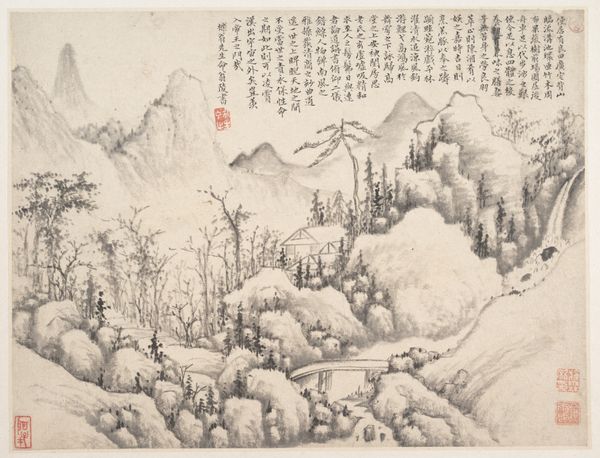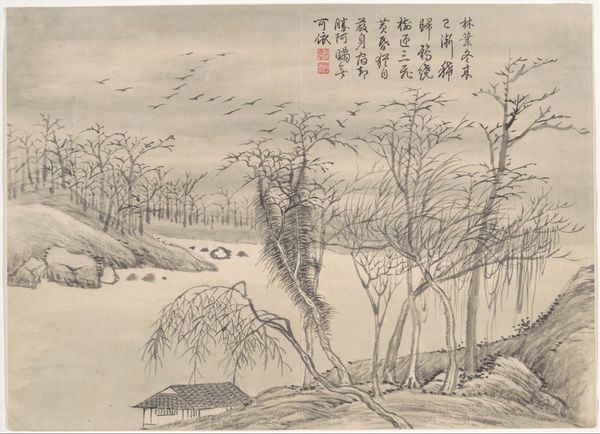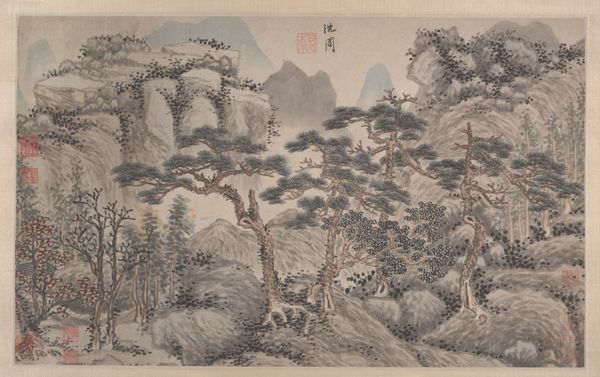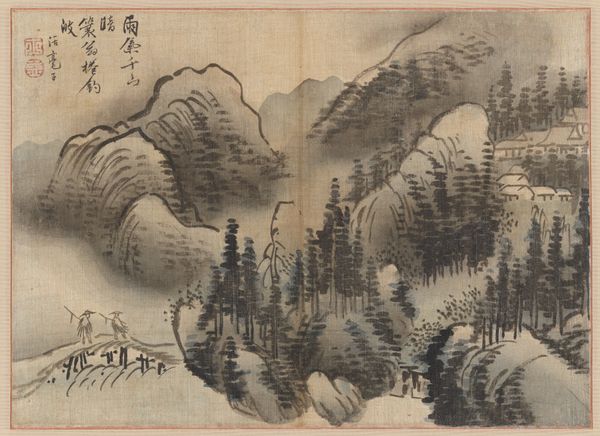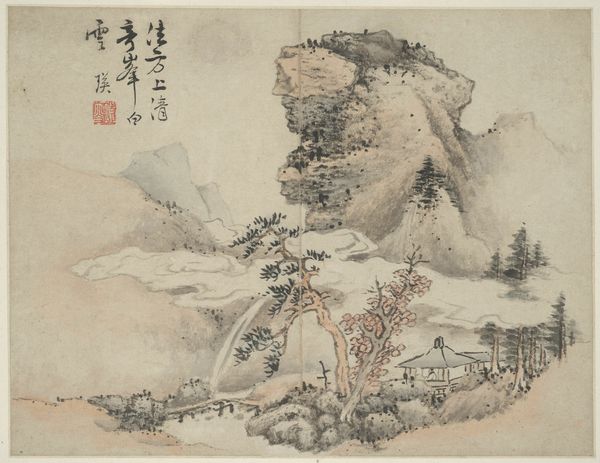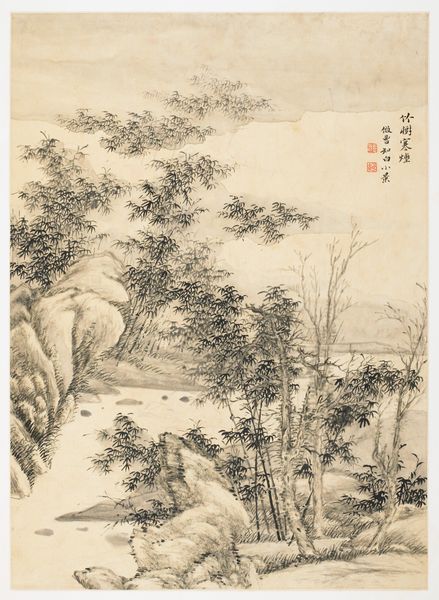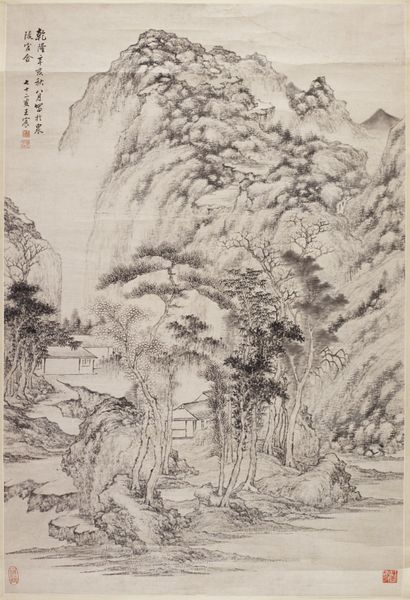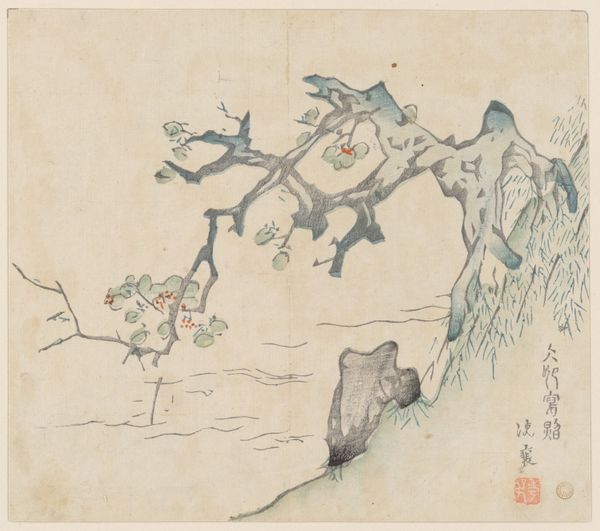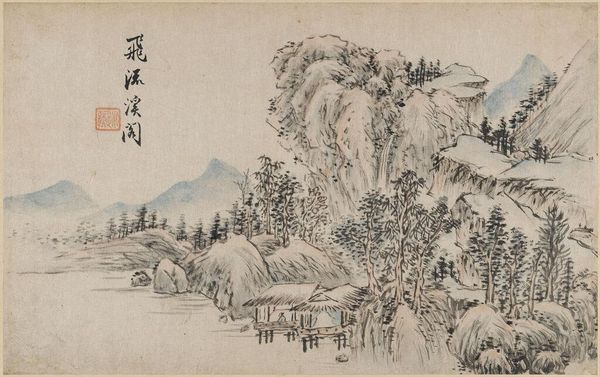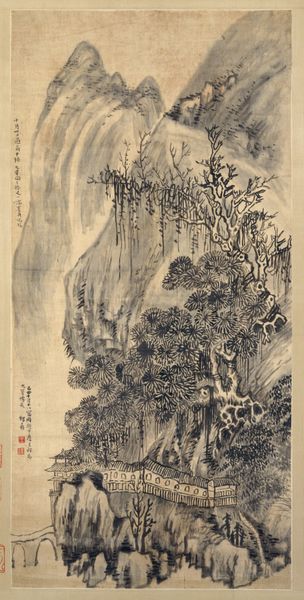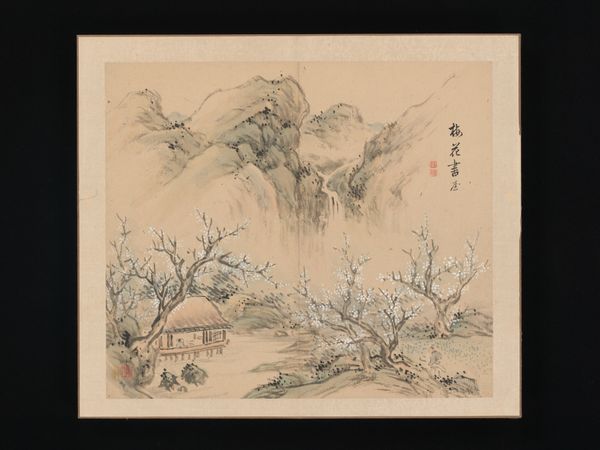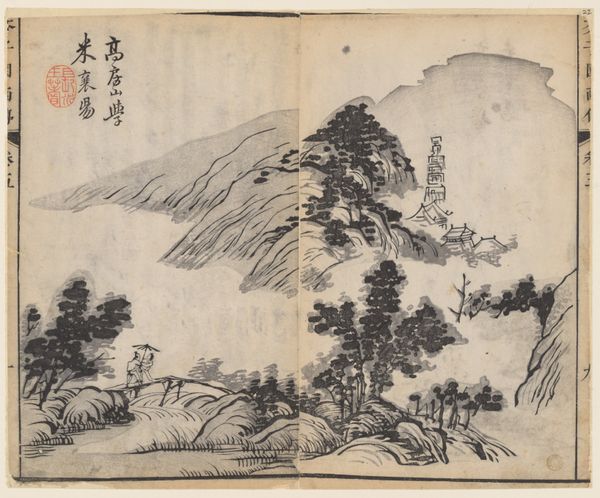
Dimensions: 9 3/4 x 13 in. (24.8 x 33 cm)
Copyright: Public Domain
Editor: We are looking at "Snowscape, from Album for Zhou Lianggong" created between 1645 and 1655. It's attributed to Yun Xiang, and it's an ink and tempera drawing on paper. It feels very still and quiet, with this delicate balance between the dark ink and blank spaces. What immediately stands out to you? Curator: Notice the meticulous composition; it reveals a clear articulation of space, a deliberate layering of forms from the foreground to the distant peaks. The ink washes are modulated, creating tonal variations that mimic the play of light on snow. Ask yourself: how does the artist create a sense of depth without relying on Western perspective? Editor: It's so different from what I usually think of as landscape art, there’s a certain graphic quality. But the calligraphic text too… Is it purely aesthetic, or is it integral to the piece's meaning? Curator: The calligraphy is undoubtedly integral. Consider it as a visual element, much like the rocks or trees. It introduces texture and directional movement. What emotions are evoked through the angular strokes of the calligraphy juxtaposed with the soft forms of the snow-covered landscape? Does this tension heighten or subdue the scene’s emotive impact? Editor: It adds an interesting dynamic! I see how the sharp text guides your eye and kind of competes and contrasts with the soft washes of the mountain. Curator: Precisely! It's a carefully orchestrated interaction. Also, observe how the blank spaces serve as active participants. Are they merely absences or crucial to representing the essence of "snow"? Consider the philosophical implications. Editor: So interesting to think about "nothingness" as an active ingredient! I'll definitely be more mindful of these visual relationships going forward. Curator: Indeed, through careful observation, we learn that what is omitted is often as critical as what is included.
Comments
No comments
Be the first to comment and join the conversation on the ultimate creative platform.
